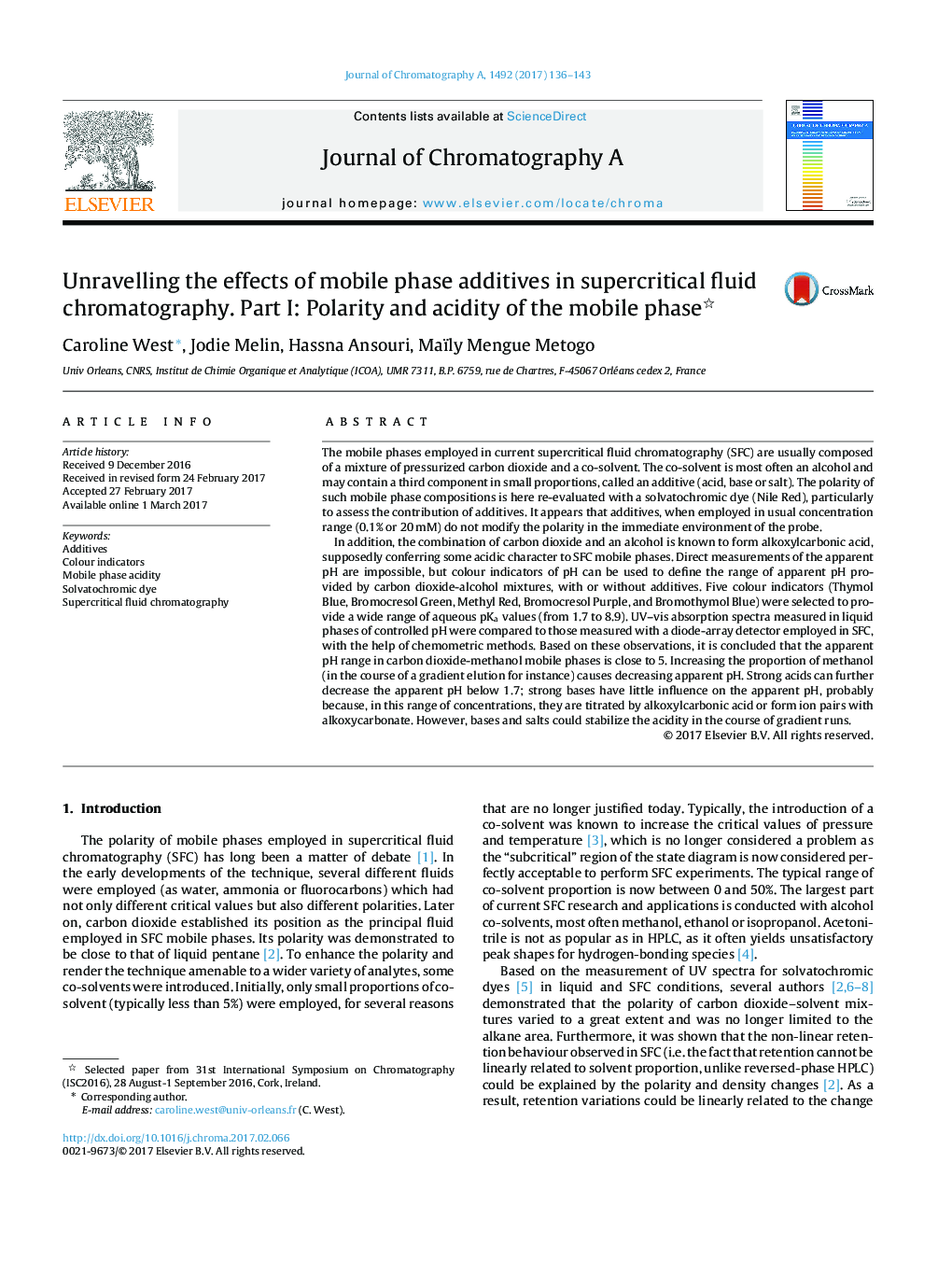| کد مقاله | کد نشریه | سال انتشار | مقاله انگلیسی | نسخه تمام متن |
|---|---|---|---|---|
| 5135602 | 1493434 | 2017 | 8 صفحه PDF | دانلود رایگان |

- Polarity effects of mobile phase additives are assessed with a solvatochromic probe.
- Additives in usual concentration ranges cause no significant change in polarity.
- Acidity of SFC mobile phases is assessed with pH colour indicators.
- Apparent pH in carbon dioxide-methanol mixtures is around 5.
- Basic additives do not yield basic conditions, acidic additives yield acidic conditions.
The mobile phases employed in current supercritical fluid chromatography (SFC) are usually composed of a mixture of pressurized carbon dioxide and a co-solvent. The co-solvent is most often an alcohol and may contain a third component in small proportions, called an additive (acid, base or salt). The polarity of such mobile phase compositions is here re-evaluated with a solvatochromic dye (Nile Red), particularly to assess the contribution of additives. It appears that additives, when employed in usual concentration range (0.1% or 20Â mM) do not modify the polarity in the immediate environment of the probe.In addition, the combination of carbon dioxide and an alcohol is known to form alkoxylcarbonic acid, supposedly conferring some acidic character to SFC mobile phases. Direct measurements of the apparent pH are impossible, but colour indicators of pH can be used to define the range of apparent pH provided by carbon dioxide-alcohol mixtures, with or without additives. Five colour indicators (Thymol Blue, Bromocresol Green, Methyl Red, Bromocresol Purple, and Bromothymol Blue) were selected to provide a wide range of aqueous pKa values (from 1.7 to 8.9). UV-vis absorption spectra measured in liquid phases of controlled pH were compared to those measured with a diode-array detector employed in SFC, with the help of chemometric methods. Based on these observations, it is concluded that the apparent pH range in carbon dioxide-methanol mobile phases is close to 5. Increasing the proportion of methanol (in the course of a gradient elution for instance) causes decreasing apparent pH. Strong acids can further decrease the apparent pH below 1.7; strong bases have little influence on the apparent pH, probably because, in this range of concentrations, they are titrated by alkoxylcarbonic acid or form ion pairs with alkoxycarbonate. However, bases and salts could stabilize the acidity in the course of gradient runs.
Journal: Journal of Chromatography A - Volume 1492, 7 April 2017, Pages 136-143